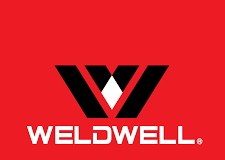Introduction
Kobelco, Japan has introduced recently a titania-based, all positional flux-cored wire, DW-91B91, classified as per AWS A5.29 E91T1-B9M-(H4), complementing the range of welding consumables for P91 that is already available for SMAW, GTAW, GMAW & SAW processes to weld 9Cr-1Mo-V steels such as ASTM Gr.91, T91, P91. The specified level of Mn+Ni is less than 1.2%, but actual test data indicate below 1.0%.
P91 grade steel
Thermal power plants aiming higher efficiency and reduction of CO2 emissions require higher boiler operating steam temperature and pressure to be fed into power generating turbines. P91 ferritic grade steel is proven for this application. A highly tempered martensitic metallographic structure provides the most desired high temperature creep strength and toughness.
Product information in brief
An important feature of B91 Series consumables is the addition of cobalt (Co) to restrain delta (δ) ferrite formation and have100% martensite structure. The addition of Cobalt does not affect the Ac1 transformation point that tends to fall with the Mn+Ni content going up. Also, the product has Cr-Ni balanced index (CNB) less than 10% as per recommendation of Electric Power Research Institute (EPRI) proposed in its report No. 1023199 “Guidelines and Specifications for High-Reliability Fossil Power Plants.”
Fig. 1 Macrostructure of cross section of deposited metal (PWHT condition: As welded)

CNB = (Cr equivalent) – (Ni equivalent) = (Cr+6Si+4Mo+1.5W+11V+5Cb+9Ti+12Al) – (40C+30N+4Ni+2Mn+1Cu) < 10 % (mass %)
Ac1 transformation point
The PWHT is desirable to be carried out at the designated temperature by ASME/AWS for P91 steels (760 +/- 15 deg. C) to get the best mechanical properties of the martensitic microstructure with no delta ferrite. The ASME/AWS SFA 5.28 classification of year 2021 has grouped the P91 consumables into three categories based on Mn+Ni content, wherein less than 1.0% is the most preferred
Actual Test result
The all-weld metal chemistry is tabulated along with the AWS specification:

Table2: Typical chemical composition of deposited metal

LMP (×103) LMP (×103)
Fig.2 The effect of PWHT condition on tensile properties Fig.3 The effect of PWHT condition on absorbed energy
Conclusion:
Kobelco flux-cored wires for P91 welding is now available, supplementing the other consumables already available for SMAW, GTAW, GMAW & SAW of this category. A summary of test results brings out clearly the suitability of this consumable for this material grade, where applicable.

For more details and availability contact sales@weldwell.com
IF-2911 Interesting Facts – Titanium
- AWS D1.9/D1.9M Structural Welding Code—Titanium. Released in July 2007, a new resource tool, provides the information required to engineer a structural titanium product from start to finish – from design through manufacture and inspection—in the form of a structural code of reference.
- Many, if not all, of the vessels that have landed on Mars make use of titanium in their construction. The recently deployed Perseverance Rover has six wheels, each with its own motor and their legs and spokes are made of titanium, due to it being a springe material able to sustain the bumps and knocks of Mars’ rugged terrain.
- Manufacturing in titanium has become both easier and more sustainable, bearing fruit in better products and new alloys. Aerospace and orthopaedics are the industries that benefit most, but auto parts, sports equipment, tooling, mining, and oil & gas are also increasingly reliant on 3D-printed titanium.
- 3D printing is driving the development of numerous new materials, including Ti alloys. New titanium-copper alloys have been developed, with ultra-fine grain size to overcome the problems of cracking and distortion associated with alloys using column-shaped grains
- Titanium metal connects well with bone, so it has found use in surgical applications such as in joint replacements and tooth implants. The largest use of titanium is in the form of titanium (IV) oxide, extensively used s a pigment in paint, plastics, enamels & paper.






